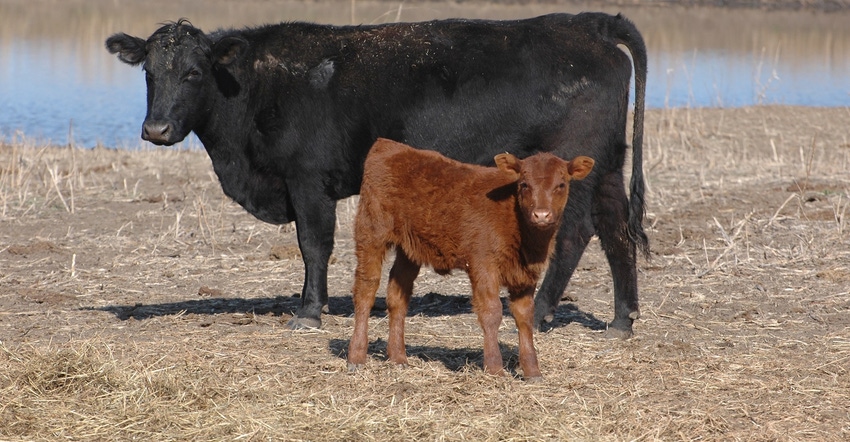Feet and leg traits are proving to be moderately heritable
February 1, 2020

Sponsored Content
Used to be, cattle structure, especially feet and leg issues, received little overall industry attention. That changed in recent years, though, as lameness increased in feedlot cattle and in fed cattle at the packing house, or at least generated more chatter.
Whenever and wherever it occurs, Bob Weaber, Extension beef cow specialist at Kansas State University (KSU) emphasizes, “Severe lameness is not just a production problem, it’s an animal welfare issue.” This was in a presentation during the most recent Brown Bagger series from the National Beef Cattle Evaluation Consortium, which you can find at nbcec.org.
Weaber also notes feet and leg problems obviously have economic consequences for both commercial cow-calf and seedstock producers.
Commercial-cow calf producers likely view feet and leg structural challenges as an indicator of cow longevity and stayability within the herd, Weaber says. Bulls or cows exiting the herd due to feet and leg problems, before there’s ample opportunity to recoup their cost, represent economic loss.
Conversely, seedstock producers, who replace bulls purchased by customers due to feet and leg problems, likely view associated traits as directly and economically relevant.
Experienced individuals can and do sort cattle with structure as a criterion. To make any breed-wide or industry-wide improvement, however, requires quantification of the trait in question. In turn, that begets questions of which specific traits to evaluate and how to quantify them. Next comes figuring out whether specific traits are heritable enough to allow selection pressure.
That’s what Weaber and other KSU researchers began to tackle several years ago.
Feet and leg traits are lowly to moderately heritable
Bottom line, based on their research, Weaber says, “Feet and leg traits have low to moderate heritability, so if selection pressure is placed on these traits, genetic change can be realized.”
Here’s the short, simple version of getting to that conclusion.
Weaber and other KSU researchers devised a scoring system to evaluate Red Angus and Simmental cattle, in cooperative projects with the Red Angus Association of America and the American Simmental Association. Previous research in the dairy industry and in the Australian beef cattle herd offered some guidance.
“Feet and leg trait evaluation has been present in the dairy industry since the early 1980s and currently ranks as one of the most economically relevant traits in their genetic evaluations,” according to proceedings from the 2018 KSU Cattlemen’s Day (Feet and Leg Traits are Moderately to Lowly Heritable in Red Angus Cattle).
Those proceedings go on to explain the Australian Angus Association incorporated feet and leg traits into its genetic evaluation, reporting estimated breeding values for front feet angle, front feet claw set, rear feet angle, rear leg hind view, and rear leg side view.
Using the aforementioned Red Angus study as an example, KSU researchers evaluated 1,885 head for 14 traits. Two trained observers scored each animal for each trait, using a scale of 1 to 100, with 50 approximating the ideal. The two scores for each trait were averaged.
Subsequently, researchers truncated their system to a score of 1 to 9 (5 being ideal) to see if there was any advantage to the added granularity of the broader scale. There wasn’t. Further, Weaber explains strong genetic correlation between some of the traits suggests some can be combined, making scoring easier, without impacting the usefulness of the system.
More specifically, according to the Cattlemen’s Day proceedings, “Heritability estimates were moderate for traits such as front hoof angle (0.18-0.20), rear heel depth (0.24-0.25), foot size (0.29-0.36), and rear leg side view (0.29-0.30).
Other traits with low heritability estimates, which could still exhibit progress through selection: rear hoof angle (0.17-0.19), rear claw shape (0.15-0.17), front side view (0.17-0.17), and rear leg rear view (0.11-0.14).
“I think there is an opportunity for us to do a better job in terms of some of the conformational traits in producing bulls and feeder cattle that are better in terms of feet and leg structure,” Weaber says.
About the Author(s)
You May Also Like





